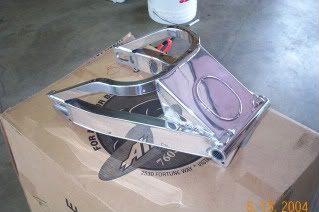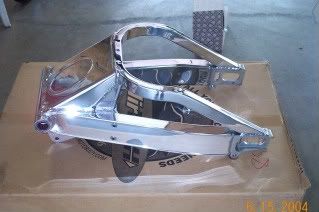Polishing metal is no different from removing scratches and swirls in paint just a harder surface but the correction steps are the same. Correcting casting is a bit more work but not really. Just as correcting paint, start with the least aggressive approach. On really rough castings I've had to start with as rough as 36 grit sandpaper to level it out. You’re then going to need to sand the scratches out with a less aggressive sand paper moving progressively finer to make them more uniform, there is no other way.
When polishing metal I don’t use water with the wet dry I use WD40. There is no need to soak it first the WD penetrates the paper pretty quickly, yes it’s messy but the paper will last a lot longer.
Simply start off with a grit that is going to level out the scratches that you currently have and work up to a finer grit. Just as in using paint compound the aggressiveness of the polish will determine just how fine of paper you will need to end with, and also whether or not your machine polishing or by hand, 800 or 1000 grit would be a good starting place to test your polish if machine polishing. If your still seeing sanding scratches then simply move to a more aggressive polish or to a finer grit paper to remove them. Just as you would if it were paint.
An easy way to tell when to move to the next grade is to sand in opposite directions with each grade. Once you can only see scratches going in the direction you are sanding then move to the next finer grit. Again depending on whether you are going to finish off by hand or machine will determine just how fine you need to go, if finishing off by hand then I would go up to 2500 or maybe even 3000. Obviously the finer you go the easier it will be to polish in the end. By using this process you can have stainless or aluminum looking like a mirror.
An important thing to remember is that you don't want to end up with a wavy surface and during the sanding process it may not be obvious but will be once it's polished. One of the tools I use when sanding larger surfaces is a 4" palm sander using full sheets of paper just like you would if you were working on wood. I have one dedicated just for this because the backing pad will be shot for wood work after words. For smaller surfaces I either use a regular rubber sanding block or something else in it's place to fit the surface working on. I've even used pink erasers as a sanding block. The Mequires sanding sponges work extremely well for sanding metals


